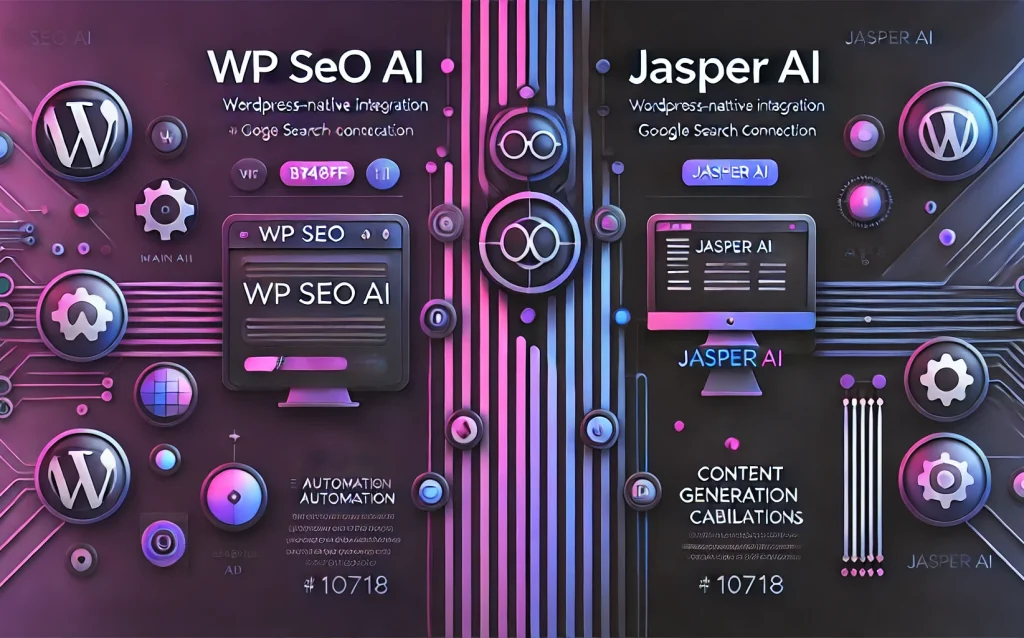Content Creation: AI and Human Efforts
The emergence of AI writing tools has sparked a debate on their effectiveness compared to the traditional human writer.
AI writing tools have revolutionized the way we approach content generation, offering speed and efficiency that can be a game-changer for businesses.
However, human writers bring to the table a level of creativity and emotional intelligence that AI is still striving to match. As we compare these two forces, it’s crucial to consider the unique contributions each can make to the content landscape.
Understanding AI Writing Tools
AI writing tools are software programs that use artificial intelligence to generate content.
They are designed to mimic human writing styles and can produce a wide range of content types, from blog posts to reports.
These tools are becoming increasingly sophisticated, with some even capable of understanding context and nuance to a certain degree.
One of the main advantages of AI writing tools is their ability to produce content quickly.
They can generate articles in a fraction of the time it would take a human writer, which can be particularly beneficial for businesses that need to produce a large volume of content.
Additionally, AI tools can work around the clock without the need for breaks, making them a reliable option for meeting tight deadlines.
The Human Touch in Writing
Despite the advancements in AI technology, there is still a significant demand for the human touch in writing.
Human writers are able to connect with readers on an emotional level, crafting stories and messages that resonate deeply. The ability to understand and evoke emotions is something that AI has yet to fully replicate.
Moreover, human writers bring their own unique experiences and perspectives to their work, which can add depth and richness to the content.
They can also adapt their writing style to suit different audiences and purposes, something that AI tools are still learning to do effectively.
The human element in writing is irreplaceable when it comes to creating content that truly engages and inspires readers.
Pros of AI Writing Tools
AI writing tools offer several benefits that can enhance content creation strategies:
- For one, they can significantly reduce the time spent on drafting and editing.
- By automating certain aspects of the writing process, these tools can help streamline workflow and increase productivity.
- They are also excellent for generating data-driven content, as they can process and incorporate large volumes of information with ease.
- Another advantage is the consistency in tone and style that AI tools can maintain across various pieces of content. This can be particularly useful for brands looking to establish a uniform voice in their communications.
Cons of AI Writing Tools
While AI writing tools have their advantages, they also come with limitations:
- One of the main drawbacks is the lack of genuine creativity and the ability to produce truly original content.
- AI-generated content can sometimes feel formulaic or lack the nuanced understanding of human emotion and cultural context that a human writer naturally possesses.
- Another concern is the potential for AI to produce content that is too generic or fails to capture the unique voice of a brand or individual. This can lead to content that, while technically accurate, fails to engage the audience or stand out in a crowded digital landscape.
Pros of Human Writers
Human writers excel in areas where AI tools may fall short:
- They are capable of producing content with a high degree of originality and creativity, drawing from personal experiences and emotions. This can result in content that is more engaging, relatable, and effective at storytelling.
- Human writers can also adapt their tone and style to suit different audiences, something that AI is still catching up with.
- Another significant advantage of human writers is their ability to conduct in-depth research and present complex ideas in an accessible manner. They can critically analyze information and present arguments with a level of sophistication that AI tools have yet to achieve.
- Human writers can also respond to feedback and make nuanced revisions that enhance the overall quality of the content.
Cons of Human Writers
While human writers bring invaluable skills to the table, there are also challenges associated with relying solely on human content creation:
- One such challenge is the time factor; writing high-quality content can be a time-consuming process, and human writers may not always be able to meet tight deadlines or handle large volumes of work as efficiently as AI tools.
- Additionally, human writers can be prone to inconsistencies in their writing, whether it’s due to changes in mood, health, or external distractions. This can affect the uniformity of content produced over time.
- There’s also the matter of scalability – as businesses grow and their content needs increase, it can be difficult to maintain a consistent level of quality without significant investment in additional human resources.
Blending AI and Human Creativity
The most effective content strategies often involve a blend of AI and human creativity. AI writing tools can handle the heavy lifting when it comes to generating initial drafts or producing straightforward, data-heavy content. This frees up human writers to focus on adding the creative and emotional elements that make content truly stand out.
By leveraging the strengths of both AI and human writers, businesses can create a dynamic content creation process that maximizes efficiency while maintaining quality.
Finding the Right Balance
In conclusion, both AI writing tools and human writers have their respective pros and cons. The key is to find the right balance that suits your content creation needs. AI can offer speed, efficiency, and consistency, while humans provide creativity, emotional intelligence, and nuanced communication.
At SEO AI, we believe in the power of combining these two forces to create content that is not only optimized for search engines but also deeply engaging for readers. By understanding the strengths and limitations of each, we can craft a content strategy that leverages the best of both worlds.






